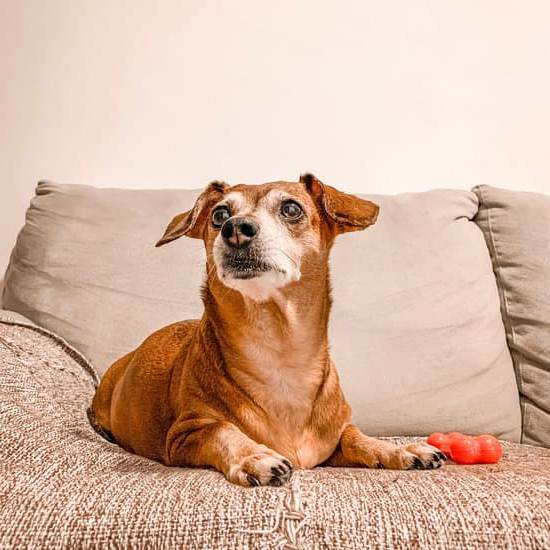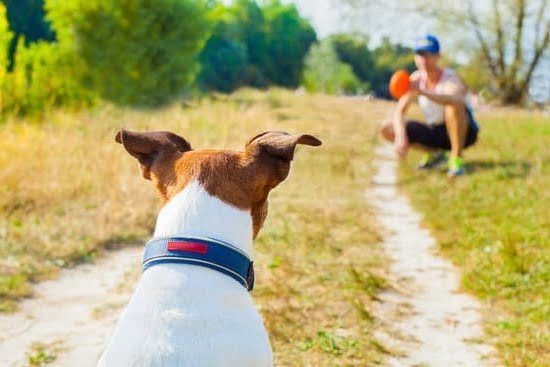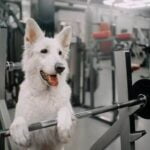From interactive playtime to developing a stronger bond between the dog and its owner, teaching a dog to take toys is an essential skill that can benefit both parties. In this article, we will explore the importance of training dogs to take toys, share valuable tips on selecting the right toys for training, and provide effective methods for conducting the training. Additionally, we will discuss common challenges that may arise during the process and offer solutions to overcome them.
Training a dog to take toys not only provides mental stimulation and physical exercise but also helps improve their behavior and overall well-being. By establishing trust and bonding with your furry companion, you can effectively initiate a successful toy training regimen. With the right techniques and consistency, you can ensure that your dog learns to take toys in a positive and enjoyable manner.
Whether you are a new dog owner or looking to enhance your existing pet’s skills, this comprehensive guide will help you understand the significance of toy training and equip you with the knowledge needed to successfully train your dog. So let’s delve into the world of canine play by learning how to train your dog to take toys.
Understanding the Importance of Toy Training
Training a dog to take toys is an important part of their overall development and well-being. This skill offers a range of benefits for both the dog and the owner, making it an essential aspect of their training. One of the key advantages of teaching a dog to take toys is the mental stimulation it provides.
Engaging with different toys can help prevent boredom and destructive behavior in your pet. Additionally, toy training also promotes physical exercise, which is crucial for the health and fitness of your furry friend.
Furthermore, training your dog to take toys can also significantly improve their behavior. By teaching them to interact with toys in a positive manner, you can redirect their energy towards more appropriate activities. This can help reduce behavioral issues such as excessive barking or chewing on household items. Overall, understanding the importance of toy training not only enhances your dog’s quality of life but also strengthens the bond between you and your pet.
In order to successfully train your dog to take toys, it’s important to use techniques that are appropriate for their age, size, and temperament. Positive reinforcement is one effective method that involves rewarding your dog when they engage with a toy in the desired way. Clicker training can also be used to reinforce this behavior by associating the sound of the clicker with taking a toy.
Gradually introducing the command to “take it” while presenting a toy can help your dog understand what is expected of them. These techniques can help build trust and communication between you and your canine companion as you work together towards successful toy training.
| Benefits | Explanation |
|---|---|
| Mental Stimulation | Engages dogs and prevents boredom. |
| Physical Exercise | Promotes health and fitness. |
| Improved Behavior | Redirects energy towards positive activities. |
Choosing the Right Toys
When it comes to training a dog to take toys, choosing the right toys is crucial for the success of the training process. The key is to select toys that are not only suitable for the dog’s size and age, but also compatible with their temperament and play preferences. For example, a high-energy dog may benefit from interactive or puzzle toys that provide mental stimulation, while a senior dog may prefer softer plush toys for comfort.
It’s important to consider the durability of the toy as well, especially if you have a strong chewer or rough player. Look for toys made of sturdy materials that can withstand rigorous play without posing a choking hazard or breaking into small pieces. Additionally, be mindful of any specific sensitivities your dog may have, such as allergies to certain materials or aversion to loud squeaky noises.
Another aspect to keep in mind when choosing toys for training is variety. Offering a diverse selection of toys can help maintain your dog’s interest and prevent boredom during training sessions. Rotating different types of toys can also introduce novelty and keep your dog engaged over time. By catering to your dog’s individual needs and preferences, you can create a positive association with their toys, making them more likely to participate in training willingly.
| Considerations | Tips |
|---|---|
| Durability | Choose sturdy materials for strong chewers |
| Variety | Rotate different types of toys for novelty |
| Sensitivities | Avoid materials that may trigger allergies or aversions |
Ultimately, taking the time to select appropriate toys based on your dog’s specific characteristics will lay the foundation for successful toy training and ensure both you and your pet enjoy this bonding experience.
Establishing Trust and Bonding
Building trust and bonding with your dog is essential before starting the training to take toys. This foundation of trust will not only make the training process easier, but it will also deepen the relationship between you and your furry companion. Here are some tips to help you establish trust and bonding with your dog:
- Spend quality time together: Dedicate time each day to bond with your dog through walks, playtime, grooming, or simply relaxing together. This will help your dog feel secure and comfortable around you.
- Use positive reinforcement: Rewarding good behavior with treats, praise, and affection can help build trust and strengthen the bond between you and your dog. Positive reinforcement encourages a positive association with training and helps create a strong connection between you both.
- Respect your dog’s boundaries: It’s important to respect your dog’s personal space and boundaries. Understanding when your dog needs some alone time or reassurance will show them that you respect their needs, building trust in the process.
By taking the time to establish trust and bond with your dog, you’ll create a solid foundation for successful toy training. Remember that every dog is unique, so be patient and attentive to their individual needs as you work on building this crucial relationship.
For more detailed guidance on how to train a dog to take toys while strengthening the bond between you both, consider seeking advice from professional trainers or joining online communities where experienced pet owners share their tips and techniques for successful toy training.
Training Techniques
When it comes to training your dog to take toys, using the right techniques is essential for success. Here are some effective methods that you can use to teach your furry friend this important skill:
1. Positive Reinforcement: Use treats, praise, and rewards to encourage your dog to take the toy from your hand or from the ground. Whenever your dog successfully takes a toy, be sure to offer plenty of praise and a tasty treat as a reward.
2. Clicker Training: Incorporating a clicker into the training process can help reinforce the behavior of taking toys. Pair the sound of the clicker with the action of taking the toy, and then reward your dog immediately afterwards.
3. Gradual Introduction to the Command: Start by introducing the command “take it” or any other phrase you prefer, and associate it with giving the toy to your dog. Begin with short practice sessions and gradually increase the duration as your dog becomes more adept at following the command.
Remember that patience is key when training dogs, so be sure to stay patient and consistent in your approach.
By following these training techniques, you can effectively teach your dog how to take toys and strengthen your bond with them in the process. If you encounter any challenges along the way, don’t hesitate to seek guidance from professional trainers or online communities specializing in pet training.
Overcoming Challenges
Resource Guarding
One common challenge that dog owners may face when training their dogs to take toys is resource guarding. This behavior can manifest when a dog becomes possessive over their toys and may growl, snap, or become aggressive when someone attempts to take the toy away. To overcome this challenge, it is crucial to work on building trust with the dog and avoid punishing or scolding them for resource guarding.
Instead, use positive reinforcement techniques to teach the dog that sharing toys leads to rewards and praise. Gradually desensitize the dog to having their toys taken away by using high-value treats in exchange for giving up the toy voluntarily.
Lack of Interest
Some dogs may initially show little interest in taking toys during training sessions. This lack of interest could be due to the type of toy being used, or it could indicate a need for more motivation from the owner. Experiment with different types of toys, such as squeaky toys, tug-of-war ropes, or puzzle toys, to find one that captures the dog’s attention.
Additionally, use enticing treats or enthusiastic praise to motivate the dog to engage with the toy. Building excitement around playtime and making it a positive experience can help increase the dog’s interest in taking toys.
Distractions
Training a dog to take toys can become challenging when distractions are present in the environment. Whether it’s other pets, people, or external noises, dogs can easily lose focus during training sessions. To address this issue, start training in a quiet and controlled environment before gradually introducing distractions.
Use commands like “focus” or “leave it” to redirect the dog’s attention back to the toy during training. Additionally, consider using physical barriers or leashes to limit distractions until the dog becomes more adept at focusing on toy training exercises.
By addressing these common challenges and implementing effective strategies for overcoming them, dog owners can successfully train their dogs to take toys and enjoy a rewarding and enriching playtime experience with their furry companions.
Maintenance and Consistency
Maintaining the dog’s ability to take toys over time is crucial for reinforcing the training and ensuring that the behavior becomes a consistent part of their routine. Consistency in training is key to successful toy training, as it helps the dog understand what is expected of them and reinforces their ability to take toys without hesitation.
Regular Practice
Consistent practice is essential for maintaining the dog’s ability to take toys. Incorporating toy training into daily routines and regular playtime sessions can help reinforce the behavior and keep it fresh in the dog’s mind. By consistently practicing the command to take toys, owners can ensure that their dogs remain proficient in this skill.
Reinforcement and Rewards
Continued reinforcement through positive rewards is an important aspect of maintaining a dog’s ability to take toys. Providing praise, treats, or other rewards each time the dog successfully takes a toy can help reinforce the behavior and encourage them to continue doing so consistently.
Persistence
Persistence in maintaining consistent training efforts is crucial for long-term success. Even after initial training, it is important for owners to continue practicing toy taking with their dogs regularly. This persistence will help solidify the behavior and make it a natural part of the dog’s interactions with toys.
By prioritizing maintenance and consistency in toy training, owners can ensure that their dogs become adept at taking toys on command and that this behavior remains ingrained over time. With continued effort and dedication to reinforcing this skill, both owners and their dogs can enjoy the benefits of successful toy training.
Troubleshooting and Additional Resources
In conclusion, training a dog to take toys is not only a fun activity but also an essential skill that provides mental stimulation, physical exercise, and improved behavior for the dog. By understanding the importance of toy training and choosing the right toys based on the dog’s size, age, and temperament, owners can establish trust and bonding with their pets before initiating the training process.
When it comes to actually training a dog to take toys, it is crucial to use effective techniques such as positive reinforcement, clicker training, and gradual introduction to the command. However, owners may encounter common obstacles like resource guarding, lack of interest, or distractions during the training process. Overcoming these challenges requires patience and consistency in implementing the chosen training methods.
As with any form of pet training, maintenance and consistency are key factors in successfully teaching a dog to take toys. It is essential for owners to continue practicing the commands and rewarding their dogs for taking toys over time.
Should difficulties arise during the training process, there are additional resources available such as professional trainers or online communities where owners can seek further assistance on how to train their dog to take toys effectively. With dedication and effort from both the owner and the pet, toy training can be a rewarding experience that strengthens the bond between them.
Frequently Asked Questions
How Do I Teach My Dog to Collect Toys?
Teaching your dog to collect toys can be done through positive reinforcement and repetition. Start by introducing the toy, using commands like “fetch” or “bring it,” and rewarding your dog when they pick up the toy. Gradually increase the distance and complexity of the task as they learn.
Why Does My Dog Not Let Me Take His Toy?
If your dog doesn’t let you take his toy, it could be due to possessiveness or resource guarding. It’s important to address this behavior with training and positive reinforcement. Encourage your dog to release the toy using a command like “drop it” and reward them when they do.
How Do You Teach a Dog to Carry a Toy?
To teach a dog to carry a toy, start by choosing a small, lightweight toy that your dog can easily pick up. Use positive reinforcement and gentle encouragement to motivate them to hold the toy in their mouth. Practice regularly and gradually increase the duration of carrying the toy.

Welcome to the blog! I am a professional dog trainer and have been working with dogs for many years. In this blog, I will be discussing various topics related to dog training, including tips, tricks, and advice. I hope you find this information helpful and informative. Thanks for reading!





